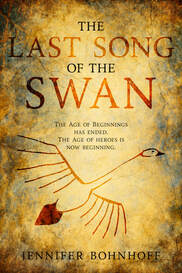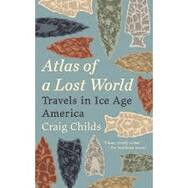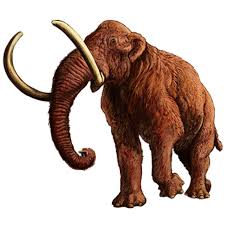 Back when I was writing The Last Song of the Swan, my novel retelling the Beowulf story in both the distant past and the present, one of the major questions I wanted to answer is whether oral history remembered events from long ago. I wondered then if Grendel, the monster in Beowulf, could be a Neanderthal.  This month Kinkajou Press, a division of Artemesia Publishing will release In the Shadow of Sunrise, a novel set in New Mexico 11,000-10,000 years ago, during the time that the people now called Folsom man wandered the area, and the same question, in a slightly different context, has popped up again. Can old stories remember events from thousands of years before their telling? In his book Atlas of a Lost World, Craig Childs asks the same question. He points out that many Native American oral traditions refer to giant, dangerous animals who walked the world when it was new. In most of those stories, there are heroes who are monster slayers, or who drive the beasts into the underworld so that man can live unmolested by them. Childs wonders if these heroes are the Clovis people, who left evidence that they were here 12,000–11,000 years ago. If so, the monsters might be the megafauna that lived in North America at the close of the last Ice Age. He wonders, particularly, if these monsters aren't the mammoths and mastodons that roamed the grasslands.  Childs shares a story shared in 1934 in American Anthropology. According to a Penobscot legend from Maine, there was once a hero named Snowy Owl who discovered that watercourses were drying up. When he sought the reason why, he found great animals with backs like hills and long teeth, who drank for half a day at a time. Snowy Owl shot them all, restoring water to the valley. Backs like hills? Long teeth? Could these monsters be mammoths or mastodons? In 1781, Thomas Jefferson learned of a Mr. Stanley, who had been taken prisoner by Indians, but escaped and returned east. Stanley had been taken somewhere west of the Continental Divide, where he claimed to have seen bones bigger than any known living land animal. The natives described the animal these bones came from, and said that it still existed in the northern part of the territory. Mr. Stanley believed they were elephants. In the 1700s, fossils were often said to be the remains of animals that had not gotten on the ark when Noah had save the earth's fauna from the great flood. But what if some of them had survived? What if they still existed in the wilds of the American west? Jefferson had already heard of a place named Big Bone Lick, Kentucky, where mammoth bones had been found. The bones were just that: bones. They had not been mineralized into fossils. Jefferson was so intrigued that he sent Meriwether Lewis to Big Bone Lick in 1803, with the purpose of collecting some of the mysterious bones. He was so pleased with the results that a year later, he sent Lewis and William Clark west in the hopes of finding more than just the bones of these magnificent creatures. While the Lewis and Clark expedition didn't find any mammoths, the animals were still in the memory of the people they encountered. More than a century later, an anthropologist collecting stories in the Northwest was still hearing about them. In a footnote to his 1918 study, James Teit wrote that he was told of a very large animal, built like a hairy elephant, These animals, he said, had not been seen for several generations. but their bones were still found occasionally . Several generations? Since mammoths are thought to have gone extinct approximately 11,000 years ago, those are very long generations, indeed. But longer still is the memory of the people who were still telling stories about these creatures.  Jennifer Bohnhoff is a former middle school and high school history and language arts teacher. She lives in the mountains of central New Mexico and write historical and contemporary fiction for middle grade through adult readers. She is available to lecture on the history behind her stories. The booklinks in the above blog are for my recommended book lists on Bookshop.org, an online bookseller that gives 75% of its profits to independent bookstores, authors, and reviewers. If you click through my book lists and make a purchase on Bookshop.org, I will receive a commission, and Bookshop.org will give a matching commission to independent booksellers. But if you’re not looking to buy, browse my lists and find the books you’re interested in at your local library. |






No comments:
Post a Comment